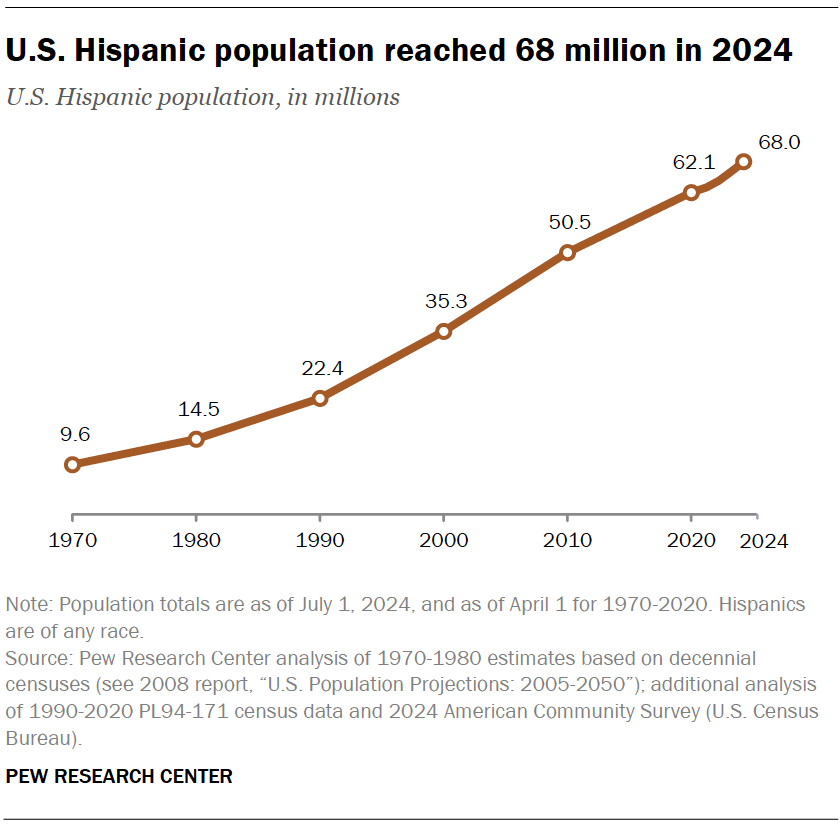Report on Educational Policy and Sustainable Development Goals: An Analysis of Diane Ravitch’s Perspective
SDG 4: Quality Education – The Core Conflict
An analysis of educational historian Diane Ravitch’s evolving perspective reveals significant challenges to achieving Sustainable Development Goal 4 (Quality Education), which aims to ensure inclusive and equitable quality education for all. The primary conflict identified is the movement toward privatization, which threatens the integrity and accessibility of public schooling.
- Charter Schools: Initially supported as an innovative solution, charter schools are now critiqued for failing to uphold the principles of inclusive education. Evidence suggests many raise their profiles by selectively excluding children with disabilities, behavioral issues, or those from families experiencing poverty and homelessness. This practice directly contravenes the goal of providing equitable educational opportunities.
- Voucher Programs: Universal voucher systems are identified as a mechanism that diverts critical public funds to private, largely unregulated institutions. This policy undermines the financial foundation of public education, which serves the majority of children. It functions as a subsidy for families who can already afford private tuition, exacerbating inequalities rather than promoting quality education for all. The state of Florida is cited as a key example, where billions in public funds are redirected annually.
SDG 10: Reduced Inequalities – The Impact of Privatization and Flawed Metrics
The push for privatization and certain reform measures actively works against the objectives of SDG 10 (Reduced Inequalities) by creating a tiered educational system.
- Exclusionary Practices: The selective admissions of many charter schools deepen societal divisions by segregating students based on ability, behavior, and socioeconomic status.
- Critique of Meritocracy: A reliance on standardized testing to define merit is identified as a flawed system that reinforces existing social hierarchies. Rather than measuring true potential, these tests often reflect a student’s test-taking ability and socioeconomic advantages, leading to a society where success is seen as deserved and inequality is justified.
- Racial Justice: An evolution from a “colorblind” ideology to an understanding of systemic racism is noted as essential. Policies that ignore the ongoing impact of racism fail to address a fundamental barrier to achieving equality in education and society.
SDG 8 & SDG 16: Decent Work and Strong Institutions
The report highlights the interconnectedness of a strong public education system with the principles of decent work and the development of strong, accountable institutions.
- Teacher Welfare and Decent Work (SDG 8): Widespread teacher dissatisfaction and shortages are linked to a lack of professional autonomy and respect. Legislative overreach dictating curriculum and teaching methods is demoralizing and undermines the profession. Ensuring decent work for educators requires not only adequate compensation but also professional trust and autonomy.
- The Role of Unions (SDG 8): Labor unions are presented as a vital force for achieving economic justice and decent work. They are recognized as a powerful mechanism for enabling individuals to enter and sustain themselves in the working and middle classes.
- Threats to Strong Institutions (SDG 16): The privatization movement is reportedly advanced by powerful interest groups and billionaires with ideological and business-oriented motives. Organizations such as the American Legislative Exchange Council (ALEC) promote model legislation that weakens public education and unions, thereby undermining the democratic accountability and inclusivity of public institutions.
SDG 5: Gender Equality
The analysis includes a personal reflection on the importance of SDG 5 (Gender Equality), illustrating how traditional views on gender roles can be challenged and overcome. The shift from an anti-feminist perspective, influenced by traditional gender dynamics, to a recognition of sexism underscores the personal and societal transformation required to achieve gender equality. This evolution highlights the importance of female autonomy and success in challenging entrenched patriarchal structures.
An Integrated Approach to Sustainable Development
The report concludes that achieving quality education is inseparable from a broader commitment to the Sustainable Development Goals. A holistic vision for societal improvement requires an integrated policy approach that includes:
- Massive government investment in public schooling (SDG 4).
- A commitment to racial justice (SDG 10).
- Universal access to healthcare and secure housing (SDG 3, SDG 1, SDG 11).
- The creation of meaningful employment opportunities for all citizens (SDG 8).
This comprehensive strategy is presented as essential for strengthening democracy, advancing the common good, and building a sustainable and equitable future.
Analysis of Sustainable Development Goals in the Article
1. Which SDGs are addressed or connected to the issues highlighted in the article?
-
SDG 4: Quality Education
The entire article is centered on the state of public education in the United States. It discusses issues of school funding, the debate between public schools, charter schools, and voucher programs, teacher quality and satisfaction, and the ultimate goal of ensuring “every child receives the instruction and support they need to thrive.”
-
SDG 10: Reduced Inequalities
The article highlights how certain educational policies can exacerbate inequality. It mentions that charter schools may reject “children with disabilities or behavioral issues or who come from unhoused families or families living in poverty.” It also critiques the idea of meritocracy based on standardized tests and “colorblind logic” for denying the ongoing impact of racism, both of which are central to reducing inequality.
-
SDG 8: Decent Work and Economic Growth
The article addresses the working conditions of teachers, citing “teacher dissatisfaction,” shortages in key areas, and the need for “respect and autonomy” as crucial for job satisfaction and retention. It also champions the role of unions as “the most powerful force we have for people to rise into the working or middle classes” and mentions the importance of access to “meaningful jobs.”
-
SDG 16: Peace, Justice and Strong Institutions
The article discusses the integrity of educational institutions, referencing charter schools closing due to “corruption by school administrators.” It also examines how powerful private interests, such as billionaires and political action committees (ALEC), influence public policy and legislation, undermining democratic and accountable governance of the public education system.
-
SDG 5: Gender Equality
Diane Ravitch’s personal journey is used to illustrate broader issues of gender equality. She recounts her shift from an anti-feminist viewpoint, influenced by a traditional upbringing and a sexist husband, to recognizing the need for women’s equality as she became successful in her own right.
2. What specific targets under those SDGs can be identified based on the article’s content?
-
SDG 4: Quality Education
- Target 4.1: By 2030, ensure that all girls and boys complete free, equitable and quality primary and secondary education. The article’s central theme is the defense of public schooling against privatization through charters and vouchers, which Ravitch argues undermines the provision of free and equitable education for all children.
- Target 4.5: By 2030, eliminate gender disparities in education and ensure equal access to all levels of education… for the vulnerable, including persons with disabilities… and children in vulnerable situations. The article directly addresses this by pointing out that some charter schools “raise their profiles by rejecting children with disabilities… or who come from unhoused families or families living in poverty,” which is a failure to ensure equal access for vulnerable children.
- Target 4.c: By 2030, substantially increase the supply of qualified teachers. The discussion on “teacher shortages in STEM… and special education,” teacher dissatisfaction, and the need for better preparation, respect, and autonomy directly relates to the challenge of maintaining an adequate supply of qualified and motivated teachers.
-
SDG 10: Reduced Inequalities
- Target 10.3: Ensure equal opportunity and reduce inequalities of outcome, including by eliminating discriminatory… policies and practices. Ravitch’s critique of universal vouchers as “welfare for the rich” and her argument that standardized tests create a cruel society where low-scorers are “seen as undeserving and inferior” point to policies and practices that create unequal opportunities and outcomes.
-
SDG 8: Decent Work and Economic Growth
- Target 8.8: Protect labour rights and promote safe and secure working environments for all workers. Ravitch’s steadfast support for teachers’ unions, such as the American Federation of Teachers (AFT), and her belief that unions are a powerful force for social mobility directly align with the goal of protecting labor rights.
-
SDG 16: Peace, Justice and Strong Institutions
- Target 16.5: Substantially reduce corruption and bribery in all their forms. The article provides a specific example related to this target, noting that charter schools sponsored by a foundation “all closed for reasons that included corruption by school administrators.”
- Target 16.7: Ensure responsive, inclusive, participatory and representative decision-making at all levels. The article describes how billionaires and organizations like ALEC use their wealth and influence to promote legislation (e.g., pro-voucher bills) that serves private interests, thereby undermining a decision-making process that should be responsive to the public good and the needs of communities.
3. Are there any indicators mentioned or implied in the article that can be used to measure progress towards the identified targets?
-
For SDG 4 (Quality Education)
- Public funding for education: The article explicitly mentions the amount of state funding diverted to voucher programs in Florida (“$3.2 billion in state funding” in 2023-2024). This financial figure serves as a direct indicator of resource allocation between public and private education.
- Proportion of vulnerable students in schools: The practice of charter schools “rejecting children with disabilities or behavioral issues or who come from unhoused families or families living in poverty” implies that the enrollment data of these vulnerable groups across different school types can be used as an indicator of equitable access.
- Teacher shortages and retention rates: The mention of “teacher shortages in STEM… and special education” and the discussion of factors leading to “teacher dissatisfaction” imply that tracking shortage rates by subject and overall teacher retention rates are key indicators for the supply of qualified teachers (Target 4.c).
-
For SDG 10 (Reduced Inequalities)
- Reliance on standardized test scores for student assessment: Ravitch’s argument that “tests measure test-taking abilities and nothing else” suggests that the extent to which standardized test scores are used to determine student advancement is an indicator of policies that may perpetuate inequality (Target 10.3).
-
For SDG 16 (Peace, Justice and Strong Institutions)
- Incidents of corruption in educational institutions: The statement that charter schools “closed for reasons that included corruption” suggests that the number of such closures or documented cases of corruption can serve as an indicator for Target 16.5.
- Political donations influencing policy: The article provides a concrete example of a financial indicator for non-representative decision-making: “Jeff Yass… gave Texas Governor Greg Abbott $10 million to defeat lawmakers who oppose vouchers.” Tracking such donations is a way to measure the influence of private money on public policy.
4. Summary Table of SDGs, Targets, and Indicators
| SDGs | Targets | Indicators |
|---|---|---|
| SDG 4: Quality Education |
4.1: Ensure free, equitable, and quality primary and secondary education.
4.5: Ensure equal access for the vulnerable. 4.c: Increase the supply of qualified teachers. |
Amount of public funding allocated to public schools vs. voucher programs (e.g., Florida’s $3.2 billion for vouchers).
Enrollment rates of children with disabilities and from low-income families in charter vs. public schools. Data on teacher shortages in specific fields (STEM, special education) and teacher retention rates. |
| SDG 10: Reduced Inequalities | 10.3: Ensure equal opportunity and reduce inequalities of outcome. | The extent to which standardized test scores are used to determine student opportunities and success. |
| SDG 8: Decent Work and Economic Growth | 8.8: Protect labour rights. | Strength and influence of teachers’ unions (e.g., AFT) in advocating for worker rights and satisfaction. |
| SDG 16: Peace, Justice and Strong Institutions |
16.5: Substantially reduce corruption.
16.7: Ensure responsive and inclusive decision-making. |
Number of schools (e.g., charter schools) closed due to administrative corruption.
Volume of political donations from private individuals aimed at influencing education legislation (e.g., Jeff Yass’s $10 million donation). |
| SDG 5: Gender Equality | 5.5: Ensure women’s full and effective participation and equal opportunities for leadership. | Qualitative narrative accounts of overcoming sexism and traditional gender roles, as described in Ravitch’s personal experience. |
Source: progressive.org







